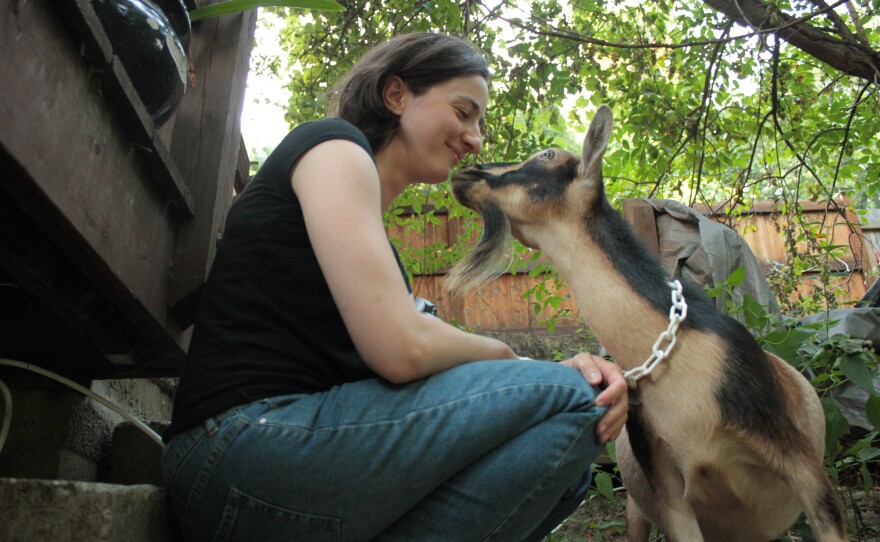After a long day of moving goats around the city, Doug Placais stood – sweaty, covered in dirt – a mile from Downtown Pittsburgh at Arlington Acres, the one-tenth of an acre urban farm he owns and operates with Carrie Pavlik.
“Well, UPS is funny because, you know, they ask you what’s in there. So the first time I said, ‘goat blood,’ and he actually didn’t blink, to his credit. I don’t know how he held a straight face.”
It turns out not even a goat pregnancy test can surprise the UPS man, said Placais. It’s just one of the many discoveries the two have made while running their farm. Pavlik and Placais also own Steel City Grazers, Pittsburgh’s only goat-grazing business. Think of it as an all-goat landscaping crew. With a guardian donkey.
“I believe we’re the only people with goats in the city although I’ve heard, like, fifth-hand that somebody might have a goat. But as somebody else pointed out, it might just be back to us,” he said.
It’s not surprising that Pavlik and Placais are likely the only two people in city limits engaged in goat husbandry: until July, there was no language regulating backyard ruminants, said Pavlik.
“In the original [2011] ordinances it didn’t really mention goats at all; it really focused just on chickens and bees. So when we got the goats a couple years ago, they were outlaws,” she said, laughing.
Arlington Acres’ two Nigerian Dwarf goats weren’t gun-toting ne’er-do-wells. But there was something of the Wild West about them, at least in the exhaustively detailed world of zoning: owning goats was uncodified, neither legal nor quite illegal. Such are the vagaries of city code, said Shelly Danko+Day, open space specialist for City Planning.
“All of our legislation, all of our rules have been building on top of each other for 200 years, and it needs to be sorted out,” she said.
Danko+Day was hired in 2013 through the city’s Open Space Plan, which aims to maximize vacant, green and recreation spaces. Part of that is making it possible to grow food, animal or vegetable, on city land, she said.
“When you get your hands in the dirt and you manipulate it and you make something grow and you see something emerge from nothing, it’s magical,” she said.
Sally McMurry, professor emerita at Penn State University specializing in agricultural history, said it's a new version of something pretty common for Pennsylvania, "say, 90 years ago,” she said.
What seems magical now – farming in the city – used to be par for the course, McMurry said. Cows grazed in present-day West Park. There were goats on Mt. Washington. According to the 1850 agricultural census, there were 185 farms in East Birmingham, now part of present-day South Side.
“Many wage-workers managed to get access to a few acres where they and their families would keep animals and raise a few vegetables and even field crops,” she said.
For many, farming and working in the mines or mills wasn’t an either/or situation. A strong infrastructure of local markets made it possible to supplement one’s income and diet by growing and selling food, McMurry said.
“The progressive reformers thought it was terrible," she said. "They thought it was kind of dirty and kind of peasant-related and so on. But if you look at it in a different way, it becomes a means of sustenance.”
In present-day Arlington, the rush of nearby traffic nearly drowned out the quiet chatter of Placais' chickens and goats as he considered how the new ordinance might affect the local food system.
“There (are) acres and acres and acres and acres in Pittsburgh that are going unused and are completely overgrown, and that’s land that potentially enterprising people could take and turn into productive farmland,” he said.
He paused and joked.
“I’ll be satisfied when the population of goats matches the population of Pittsburgh.”
90.5 WESA Celebrates Inventing Pittsburgh is supported by UPMC.





